今日はスノーブレード用のさまざまなビンディングタイプを分解して説明し、なぜ長いモデルにはリリースビンディングが不可欠なのかを解説します。最後には、あなたのSnowfeetに最適なビンディングタイプと、それが安全性とパフォーマンスにとってなぜ重要なのかがはっきりわかるでしょう。
スノーブレード用ビンディングの種類
スノーブレードに使われるビンディングには主に3種類あります:リリーススキービンディング、リリース機能なしスキービンディング、そしてスノーボードビンディングです。それぞれのビンディングタイプには長所と短所があるので、詳しく見ていきましょう。
1. リリーススキービンディング
リリーススキービンディングはスキー安全のゴールドスタンダードです。これらのビンディングは、転倒や急停止時に過度の圧力がかかるとブーツをスキーから「リリース」するよう設計されており、特に膝や足首の怪我のリスクを減らします。伝統的なスキーや長めのスノーブレードでよく使われており、パフォーマンスと安全性のバランスが優れています。
99cmを超える長さのスノーブレードには、リリースビンディングが最適で安全な選択肢です。これらは長いスキーブレードで遭遇する速度や力に耐えられる頑丈さを持ち、クラッシュ時に保護されているという安心感も提供します。
2. リリース機能なしスキービンディング
リリース機能のないスキービンディングは、よりシンプルで固定されたオプションです。これらのビンディングは転倒時に「リリース」しないため、どんな状況でもブーツがSnowfeetにしっかりと固定されたままになります。一見リスクがあるように思えますが、短いスノーブレードは操作性が高く許容範囲も広いため、問題は少ないです。さらに、激しい転倒の場合でも、リリース機能のないビンディングは足から外れることがあります。
特に65cmや99cm前後の短いスノーブレードには、リリース機能のないスキービンディングが装備されていることが多いです。これらのブレードは低速での素早く機敏な動きを想定して設計されているため、リリースシステムの必要性は最小限に抑えられています。リリース機能のないビンディングは、シンプルで手間のかからないセットアップを提供し、カジュアルなライダーや初心者にとってはメリットとなります。
3. スノーボードビンディング
一部のスノーブレードで使われている別のタイプのビンディングはスノーボードビンディングです。これらはスノーボードに見られるストラップ式のビンディングで、優れたサポートとコントロールを提供します。スノーボードビンディングは通常、65~99cmの短めのスキーブレードに使われており、リリースシステムを必要とせずにしっかりとしたフィット感を実現します。
スノーボードビンディングは、スノーボードとスキーの体験を融合させたいライダーに特に人気です。しかし、ふくらはぎが太い方や、スキーブーツで駐車場からゲレンデまでの歩行が苦手な方には、これらのビンディングが最適です。
短いスキブレードにリリースビンディングが使われない理由
特に65cm前後またはそれ以下の短いスキブレードの場合、リリースビンディングは選択肢に入りません。これらのコンパクトなスノーブレードは、従来のリリースビンディングを装着する十分なスペースがなく、リリースビンディングはより大きく長いスキー用に設計されているためです。
これが、短いスキブレードには通常、非リリーススキービンディングかスノーボードビンディングが装着される理由です。短いブレードは軽く、操作が簡単で、長いものほど高速にならないため、リリース機構の必要性はそれほど高くありません。また、短いスキーでの転倒は長いスキーほど深刻な結果を招くことは通常ありません。
長いスノーブレードにリリースビンディングが理想的な理由
99cmを超えるスノーブレードには、安全性とパフォーマンスの両面でリリースビンディングが最適です。その理由は以下の通りです:
1. 高速時の安定性向上
長いスノーブレードに移行すると、自然とスピードも上がります。高速では、しっかりとフィットしたビンディングがより重要になります。リリースビンディングはブーツをしっかり固定し、ターンを刻み、よりアグレッシブな滑り方をするための安定性を提供します。
2. 転倒や衝突時の安全性
リリースビンディングが長いスノーブレードに好まれる主な理由の一つは、転倒時にブーツをリリースできることです。転倒したり障害物にぶつかった場合、ビンディングがリリースされ、脚、膝、足首の重傷リスクを最小限に抑えます。この機能は、高速や急斜面でのスキー時に特に重要で、クラッシュ時の力が大きくなるためです。
3. オールマウンテンスキーに最適
長いスノーブレードはオールマウンテンスキーに使われることが多く、整備されたコースからパウダー、さらにはモーグルまで様々な地形に出会います。リリースビンディングはこれらの条件でより多用途で、非リリースビンディングよりも優れたコントロールと適応性を提供します。どんな地形でもビンディングがしっかりと機能し、状況が厳しくなった場合にはリリース機能の安心感も得られるので、自信を持って滑ることができます。
リリーススキービンディングの利点
リリースビンディング付きのスノーブレードを検討しているなら、期待できる主な利点は次のとおりです:
これ以上ない安全性
前述の通り、リリース機能は転倒時に脚や関節を保護するために設計されています。これは、速いまたは予測不可能な状況での怪我を防ぐために非常に重要です。言うまでもなく、99cm未満の短いスキブレードの場合、すべてのタイプのビンディングは同じ安全基準を提供します。
より良いパフォーマンス
リリースバインディングはよりしっかりとしたフィット感を提供するため、特に高速や厳しい地形でのコントロールと安定性が向上します。これにより、スキー体験全体が大きく変わり、自分の限界に挑戦する自信が得られます。ただし、通常の条件や標準速度では、すべてのバインディングは同じように機能します。
多用途性
リリースバインディングがあれば、スノーブレードはカジュアルなライドだけでなく、カービング、オフピステ、さらにはスノーパークでも活躍します。
Snowfeet Skiblades with Release Bindings
リリーススキーバインディングの利点を説明したところで、短いスキーとスノーブレードの世界をリードするブランドの一つ、Snowfeetのいくつかの例を見てみましょう。
Snowfeet Skiblades 99 with Release Bindings
Snowfeet Skiblades 99は、スピード、コントロール、安全性のバランスが取れた素晴らしい選択肢です。99cmの長さで、高速や多様な地形に対応でき、中級者から上級者に最適です。このモデルのリリースバインディングは、アグレッシブなターンや難しいコースに必要な安全性と安定性を確保します。スノーパークでトリックに挑戦したい方にも、このスキーブレードがサポートします。
これらのスキーブレードはオールマウンテンスキーに理想的で、整地されたコース、パウダー、さらにはモーグルまで多用途に対応します。リリースバインディングにより、パフォーマンスと安全性を備えた装備で自信を持ってスキーを楽しめます。
Snowfeet Skiblades 120
より長いブレードを好む方には、Snowfeet Skiblades 120がもう一つの優れた選択肢です。120cmの長さで、高速や変化するコンディションでの安定性を求めるスキーヤーに最適です。このモデルのリリースバインディングは、長く速いスキーブレードに伴う追加の力に対応するよう特別に設計されており、より高度なスキーに最も安全な選択肢となっています。
これらのスキーブレードは、整地された斜面からバックカントリーのパウダーまで、さまざまな地形でのカービングと操作性に優れています。スムーズで高速なライドを求める方も、よりテクニカルな地形に挑戦する方も、Snowfeet Skiblades 120のリリースバインディングが挑戦に備えた装備を提供します。
結論
リリーススキーバインディングは、短いスキーに挑戦したいけれど、スキーの長さやバインディングの種類の大きな変化に自信がない方に最適な選択肢です。長いスキー用の最高のバインディングと短いスキーブレードの最適な長さを融合させています。

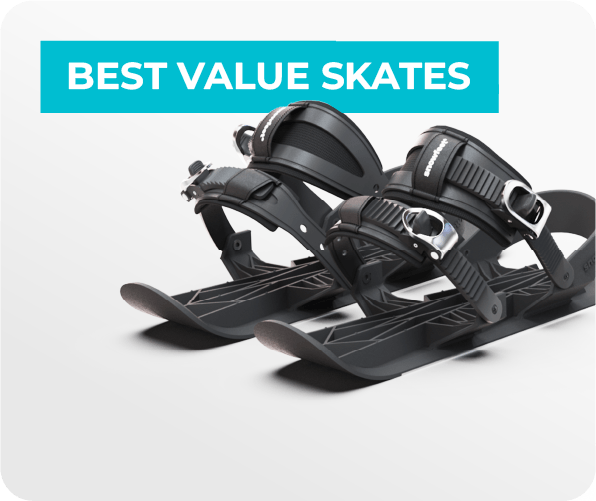


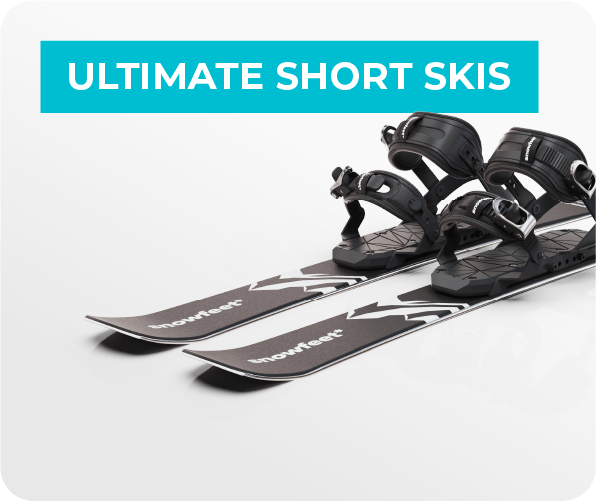


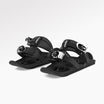
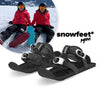

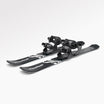




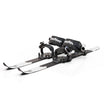

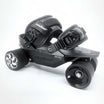

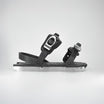



















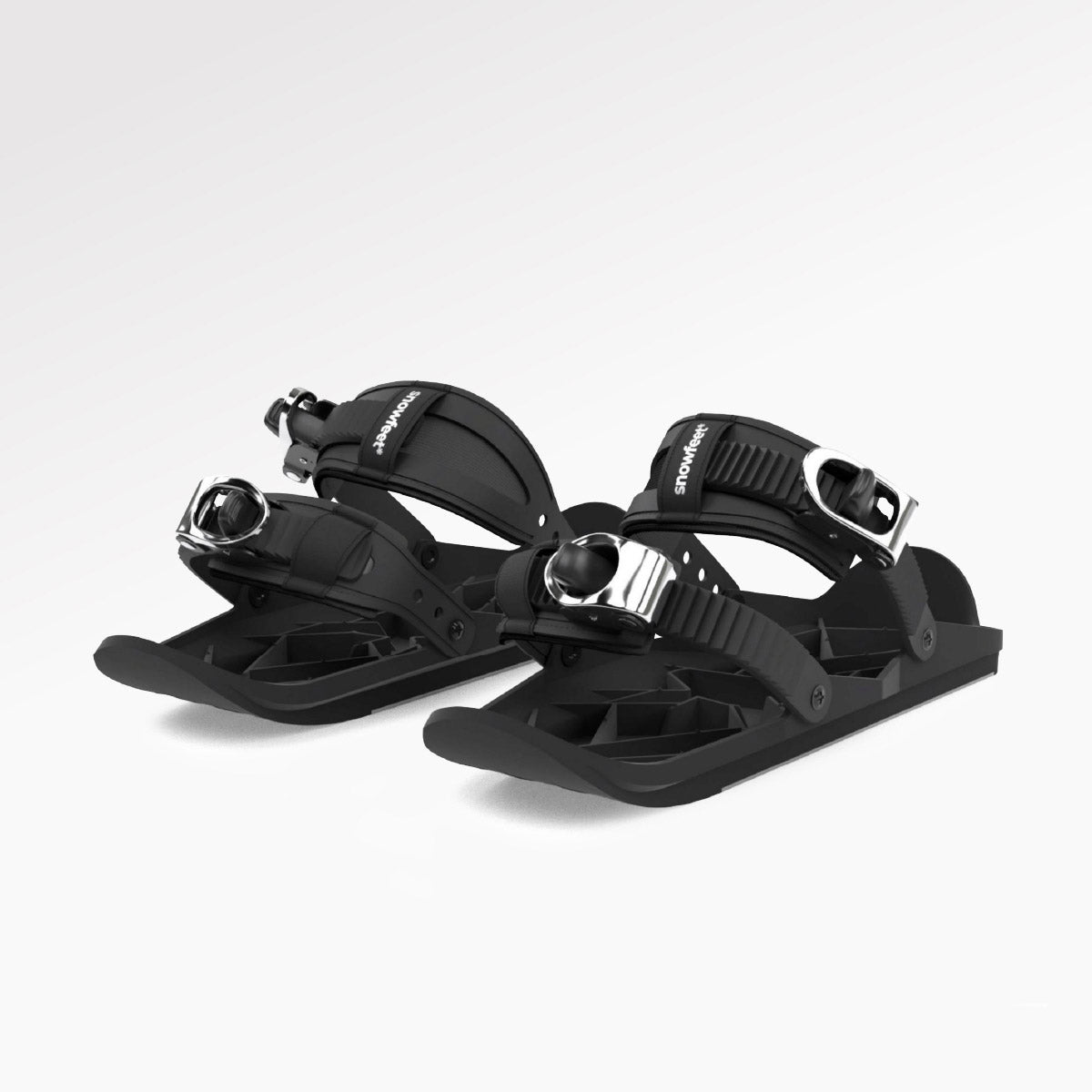
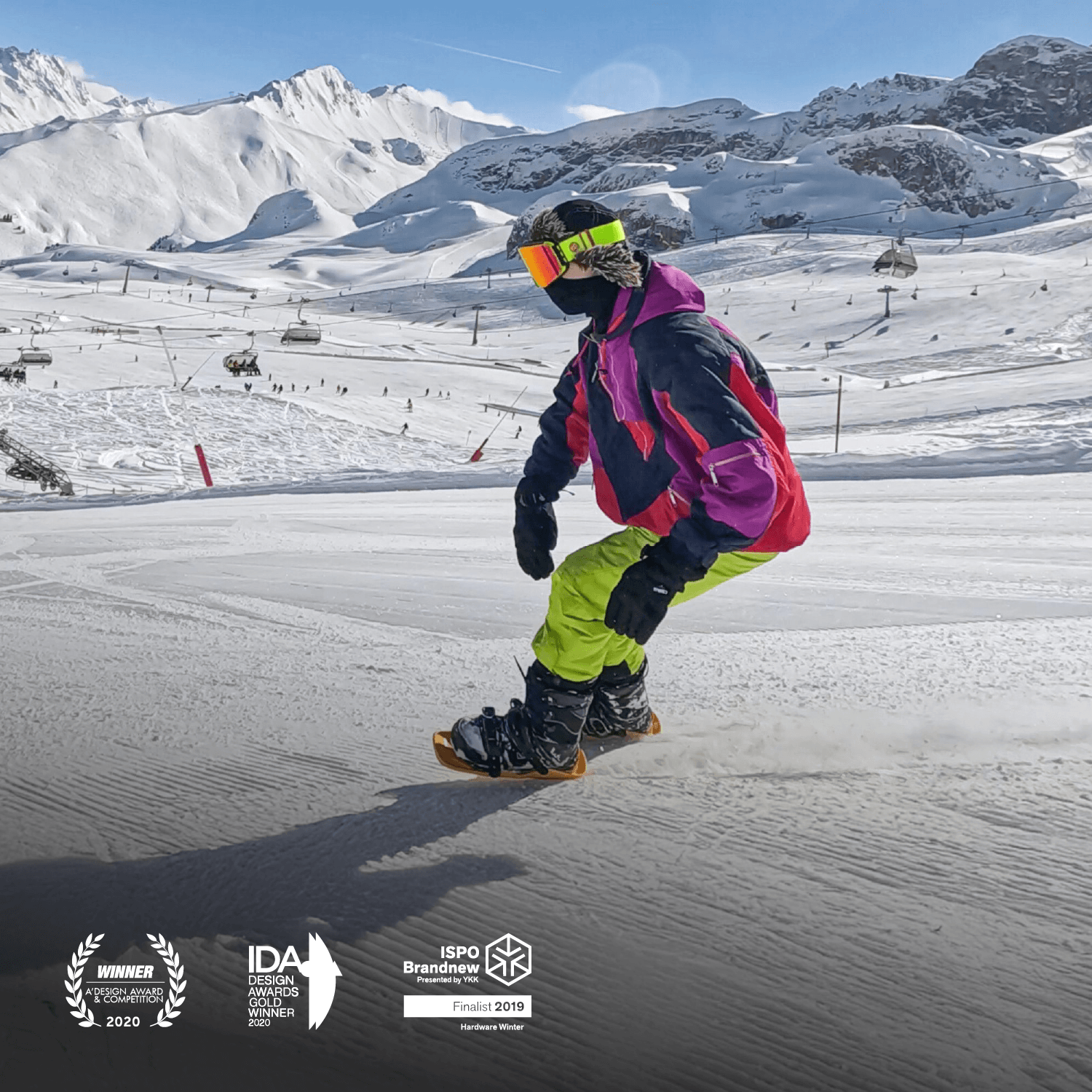
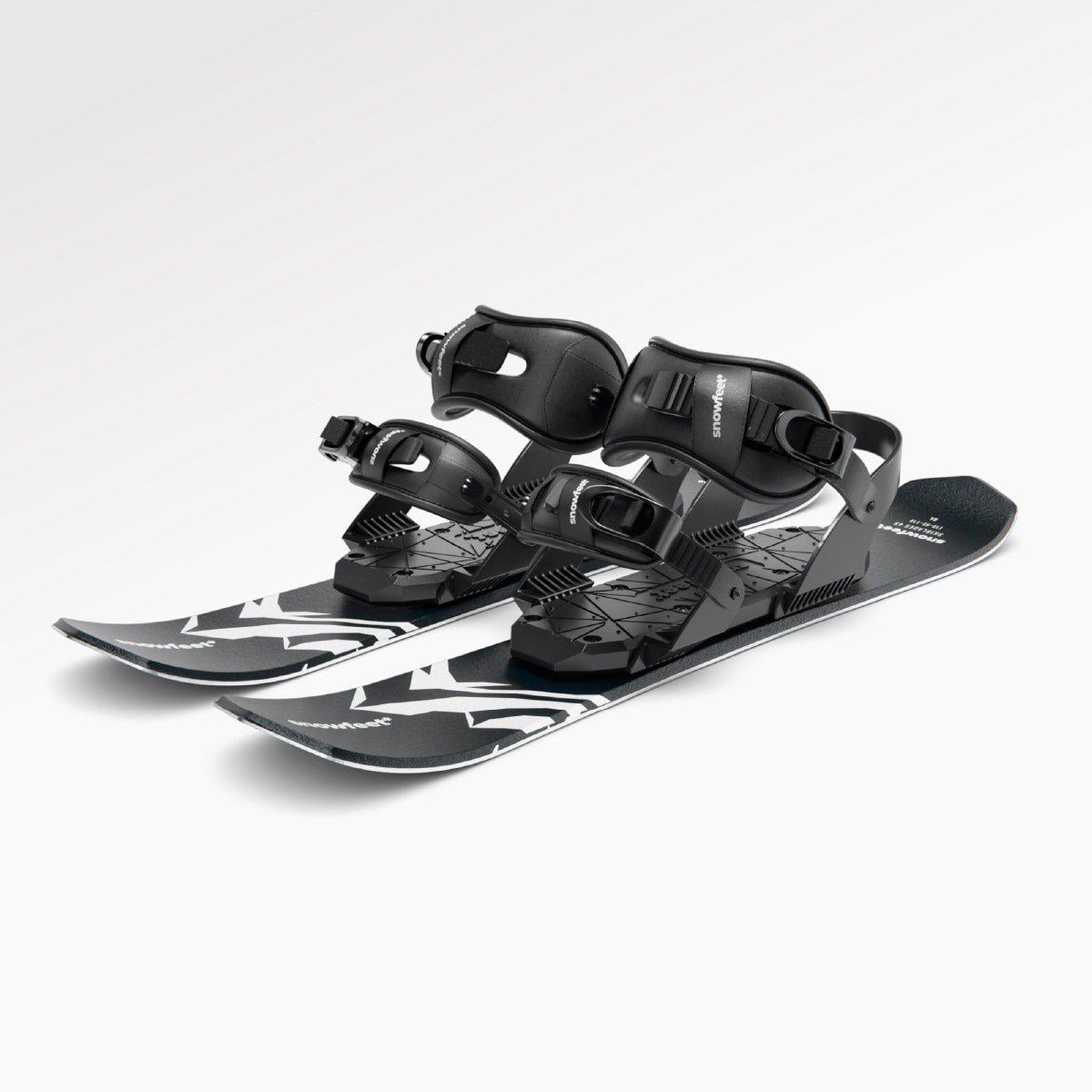



コメントを残す
このサイトはhCaptchaによって保護されており、hCaptchaプライバシーポリシーおよび利用規約が適用されます。